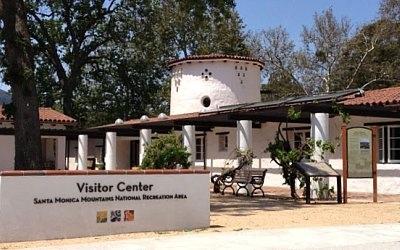Since its inception in 1916, the National Park Service (NPS) has been charged with protecting our country’s national parks for generations to come. Since the push to “go green” has become an increasing part of public consciousness in recent years, so too has the NPS expanded its efforts in that arena. From locally produced food served in park restaurants to cutting edge energy conservation, the NPS has many sustainable practices in place.
Now, the NPS has gained its first “net zero” visitor center, the Anthony C. Beilenson Visitor Center at the King Gillette Ranch in the Santa Monica Mountains National Recreation Area in California. Check out these other National Park Service green buildings—
http://www.nps.gov/sustainability/documents/sustainable/LEED-Buildings-T...
The visitor center has been awarded a LEED (Leadership in Energy and Environmental Design) Platinum certification (the highest) for its design. LEED provides building owners and operators with a framework for identifying and implementing practical and measurable green building design, construction, operations and maintenance solutions. In addition to this building, the NPS has several other LEED certified buildings.
The King Gillette visitor center is “net zero site energy,” meaning it produces and exports at least as much renewable energy as the total energy it imports and uses in a year. The building boasts a mix of both new technology and older insights into green building: photovoltaic panels, LED lighting, geothermal heating and cooling, as well as a use of natural light and green building materials. The visitor center’s energy production and consumption can be monitored online.
The Anthony C. Beilenson Visitor Center is in alignment with the Park Service’s green parks plan, which encourages units of the park system to reduce carbon emissions and use sustainable management. Kate Kuykendall, a NPS spokesperson, said, “It’s really about walking the walk since our entire agency is about protecting national resources.”
Located in northwest Los Angeles, the Santa Monica Mountains National Recreation Area is the largest urban national park in the United States. The area has a long history of human occupation and contains many significant historic and prehistoric sites and a Native American history. The national recreation area actually is made up of many parks and locations, from the beaches of Malibu to the peaks of the mountain range and is only a hop, skip, and jump from Los Angeles, making it the perfect location for a family vacation or a quick outing on a business trip.


 Support Essential Coverage of Essential Places
Support Essential Coverage of Essential Places







Comments
And people wonder why we have a $6 billion infrastructure deficit in th National Parks.
Somehow, when I saw "anonymouse" on the comment list, I knew I'd find a negative comment.
Anony, will you explain exactly why this project is so bad? Or do you just get your kicks by badmouthing anything that comes along? If you have good reasons for your opinions, let's hear them.
The money it takes to make this "net zero" is substantially higher than conventional methods and has a payback measured in decades if not life times. For the same dollars improvements could have been made to multiple facilities.
So we'll "save" energy no matter how much it costs?
Initial construction costs of LEED certified buildings are generally about the same as construction of conventional buildings.
http://hpac.com/columns/engineering-green/true-cost-leed-buildings-0111/
http://bloomington.in.gov/green-building-costs
http://www.ee-solutions.com/solutions/Solutions/Cost%20of%20LEED.aspx
There are more sources out there. It's still a relatively new idea, but the NPS is a leader in researching and developing its use. That is as it should be.
That is absolute baloney. I'm in the real estate business. I work with builders on a regular basis. I know what the actual costs are. If it were truely on par in cost, why wouldn't every project use those standards? They don't because it isn't - unless youare using some one elses money.
Okay, let's see some numbers. Some specifics.
I'm gonna call balony in return. Check out the Executive Summary, page 3 for a synopsis. The rest of the paper is also very interesting.
http://www.davislangdon.com/upload/images/publications/USA/The%20Cost%20...
There are many more similar pieces of information available on line. All one has to do is look.
Thanks for posting the links, Lee. They clearly support your point (not to mention the ecological benefits).